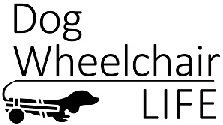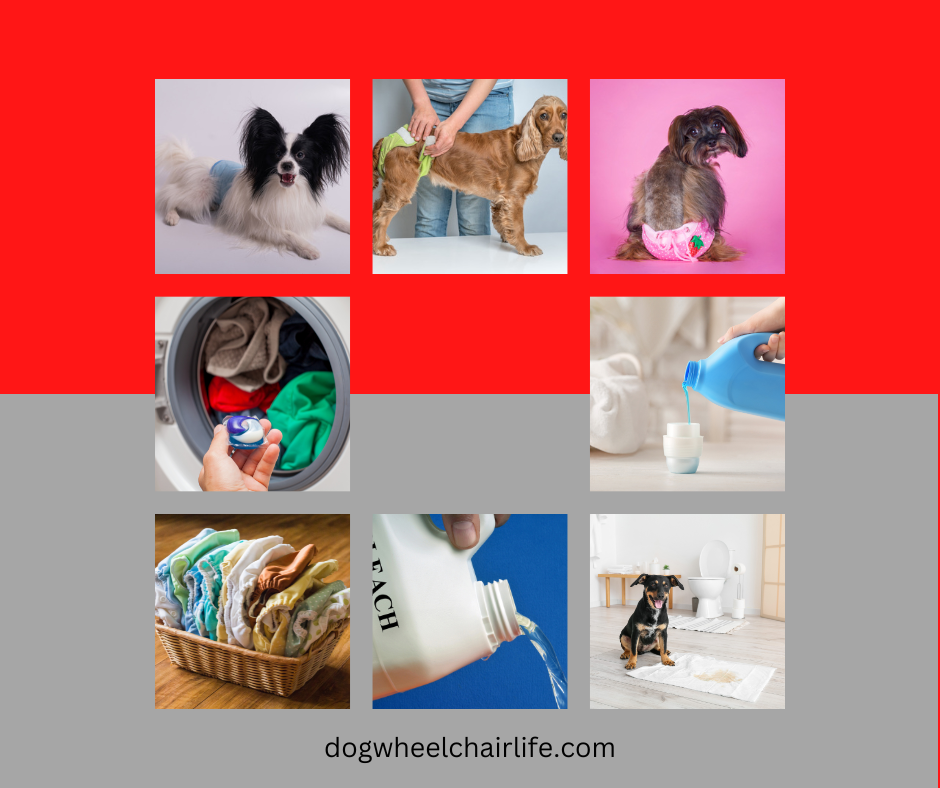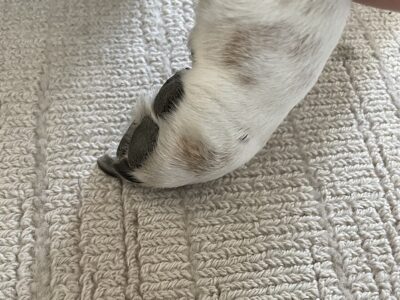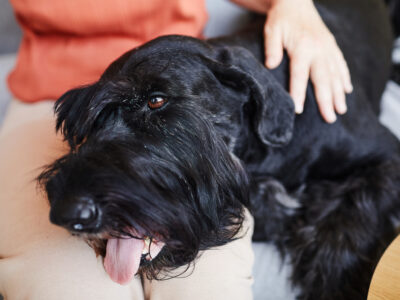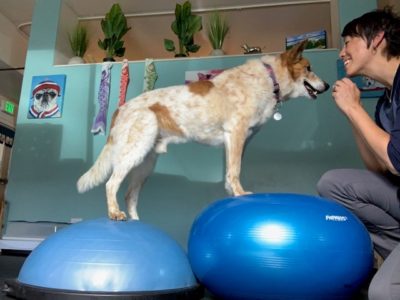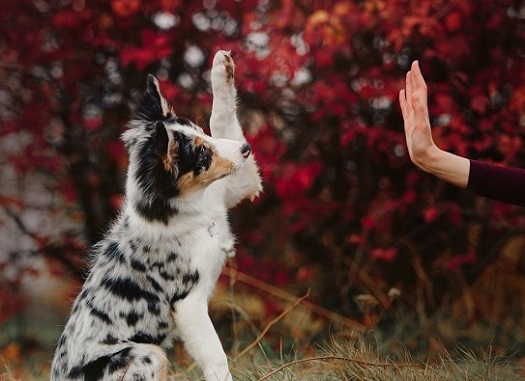
Clipping your dog’s nails isn’t just about giving your fur kid a pedicure. Regular dog nail trims and overall paw care are key to their health.
I learned this lesson the hard way. About a year after Sophie became paralyzed, I noticed the pads on her paws looked unusual. Instead of being smooth and flat, the skin was rough, uneven and crumbled when I rubbed it. It scared me. I worried she had some kind of weird disease that was eating away her paws.
My vet reassured me that Sophie was okay. She explained the pads are made of keratin, a substance that protects the outer layer of the skin. It’s designed to shed as a dog walks so that fresh, new healthy skin can take its place. Because Sophie couldn’t use her hind legs, the keratin had built up. It could’ve caused an infection, if I hadn’t crumbled it away.
From that point on I took good care of her paws.
The anatomy of a dog’s paw
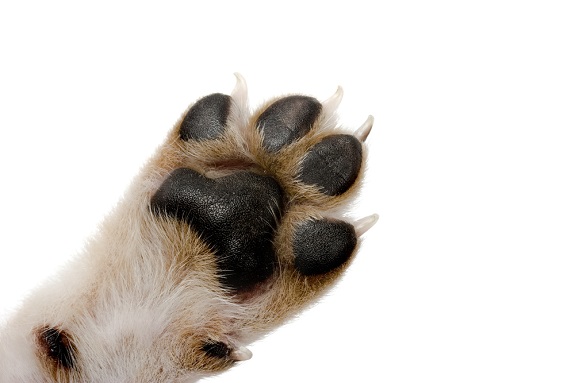
A dog’s paws have three parts: pads, toes, and claws (or nails). The pads cushion and protect the feet while the toes and nails are used for gripping, traction slowing down and stopping.
Three types of pads
Every dog has three different kinds of pads on each paw and they serve a specific purpose. The first is the digital pad. These are the four small pads located just below each toe. They function as shock absorbers for the joints, insulate the paw from extreme cold and heat and assist with balance.
Next is the big heart-shaped pad which is located in the center of the paw. It’s called the metacarpal or metatarsal pad. The job of this pad is to bear your dog’s weight and keep them from slipping on uneven terrain.
The last pad is called the carpal pad. You can find it next to the dewclaw on the front legs. It serves the important role of helping with balance and slowing or stopping movement.
The nails/claws
A nail or claw rests at the end of each toe. It looks a lot like a human nail, but there are big differences. Nails in people are protective coatings that cover each digit. Dog nails grow directly out of the bone of the toe. They share the same blood supply and nerve endings. Instead of being a covering, it’s actually part of the toe.
That’s why declawing a dog or cat is considered an amputation. It’s the removal of living bone.
Regular paw care
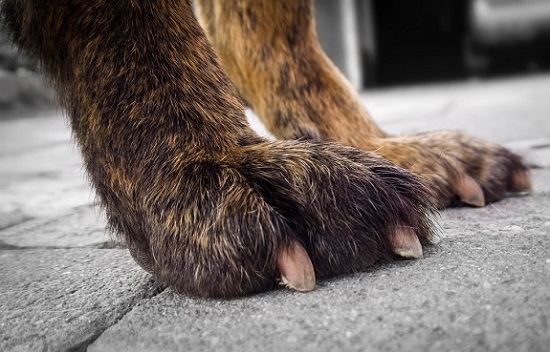
Now that you know the anatomy of your dog’s paws, it’s time to talk about the importance of regular maintenance. That means keeping the nails trim, cleaning the pads and clipping excess fur.
If your dog is disabled like my dog was, it’s easy to overlook routine care because your pet isn’t on their feet as much as an able-bodied pooch. But without it, your dog’s health could be in jeopardy.
An example is the dead skin on Sophie’s paws. They could’ve become overgrown with yeast. Yeast causes that funny scent of Fritos that pet owners often smell on their dog’s feet. It’s actually an infection that can make a dog very uncomfortable.
And any excessively long nails could’ve added to Sophie’s loss of balance or caused her pain from rips or snags.
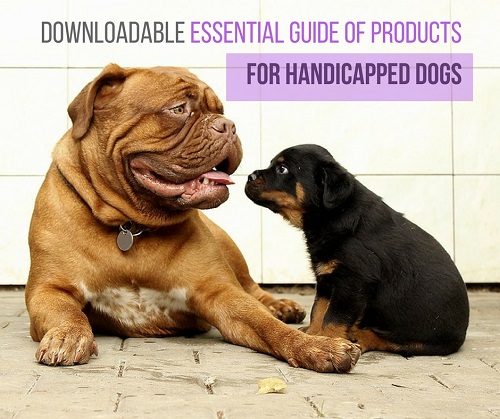
Get the Essential Guide
The Essential Guide of Products for Handicapped Dogs e-book is a labor of love for me. I wrote it to answer your most pressing questions about where to find the best products for your wheelchair dog. You’ll find products you didn’t know existed and each will improve your dog’s quality of life. Print a copy and keep it by your side.
Monthly dog nail trims
Whether you take your dog to a professional groomer or to your vet, nails need to be clipped once a month. The perfect length is when the nail reaches just above the ground when your pet is standing. Make sure the dewclaws are neatly cut as well.
Clipping nails on your own
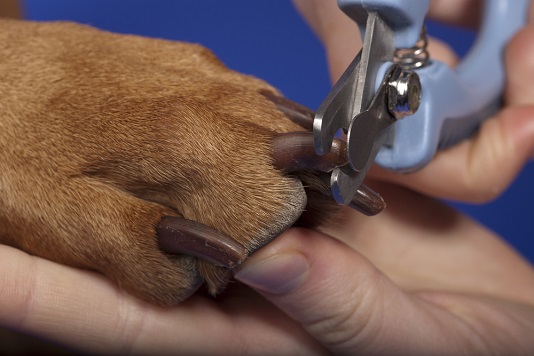
For DIY trims, here are tips from Julie Buzby, DVM, founder of Dr. Buzby’s Toegrips and veterinary expert in the health benefits of nail trims.
- Invest in quality nail clippers. Dr. Buzby recommends using clippers that look like little pruning shears rather than the guillotine style.
- Exercise your dog before the nail trim.
- Have styptic powder on hand for close cuts.
- Pick a location that’s soothing for you and your pup.
- Take your dog’s paw and start by making small angled clips. (Don’t try to trim the nail all at once.)
- Praise your dog along the way and offer treats.
- Have a friend of family member assist.
- Celebrate with your dog, even if you don’t complete the trim. You can try again later.
Paw care
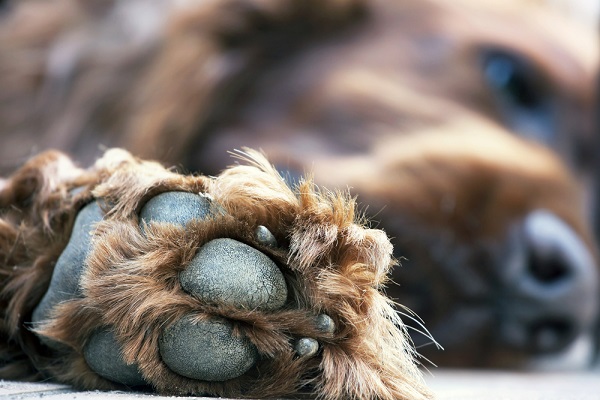
In addition to monthly pedicures, make time once a month to clean the paws.
- Clean in between the pads to free any pebbles or gravel that might have gotten caught.
- Wash each paw with mild soapy water to get rid of bacteria from the sweat and scent glands.
- Trim any fur covering the pads.
- Massage each paw to improve circulation.
- Look for any wounds, blisters, discoloration or broken nails.
- Check for any swelling or pads that have been licked or chewed.
- Make sure the skin is soft and smooth.
- Talk with your vet about applying a moisturizer or antiseptic to problem areas.
Special instructions for disabled dogs
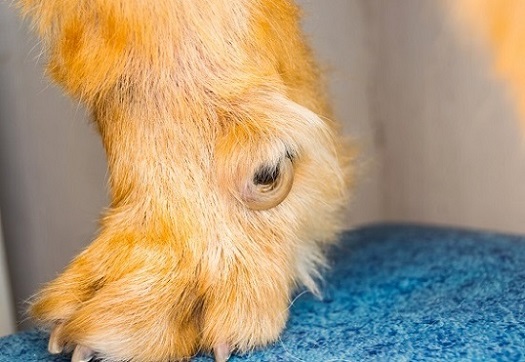
If you have a dog with mobility problems, you might think all of this paw care information doesn’t apply. The answer is just the opposite. People with disabled and paralyzed pets need to take special precautions with their dog’s paws.
The lack of control over their limbs makes them more susceptible to injuries. And if your dog doesn’t have any deep pain sensations, as most paralyzed dogs, they won’t be able to tell you they’ve been hurt.
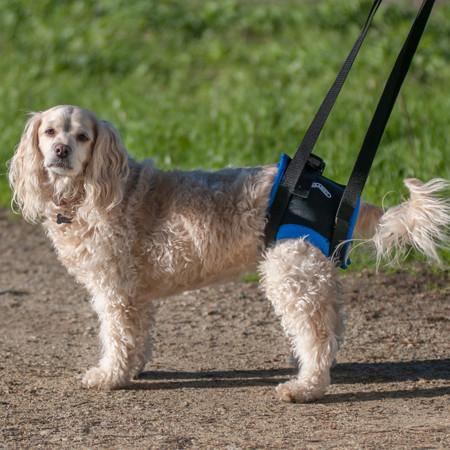
My favorite harnesses for disabled dogs.
Here are problems to look for:
Broken nails – Disabled dogs drag their hind legs or knuckle their paws. It makes them prone to broken and snagged nails.
Nails/Claws – Untrimmed nails can grow into the skin on the pad. This causes harm to the paw and worsens balance.
Dewclaws – If left uncut, dewclaws curl and grow in a circular motion until they lodge themselves deep in the skin.
Pads – Examine each pad for signs of unusually thick skin, cracks and odors.
Fur – Excess fur growing between the pads can cause slips or make it harder for dogs to get up from the ground. It decreases traction and balance.
